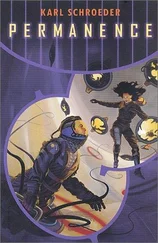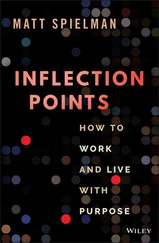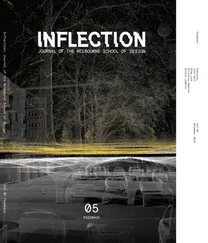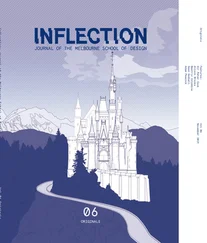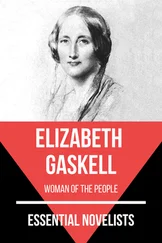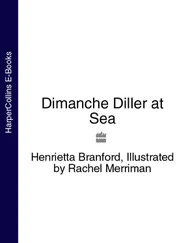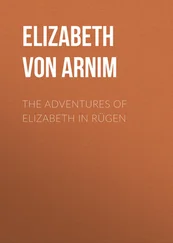This essay is a selected range of different typologies of time and described how they might mingle, overlap and interfere with one another. The usual classifications of objects as being either permanent or temporary are not false, but they do not describe the full range of experiences and activities that register within and around projects and buildings. In doing so, the tidy binary between temporary and permanent objects has been both challenged and expanded.
01Timothy Moore and Barnaby Bennett, “The Transitional City,” Volume #43 Self-Building City, (2015): 56–61.
02Bruno Latour, “Trains of Thought: Piaget, Formalism, and The Fifth Dimension,” Common Knowledge 6 (1997): 170–91.
03Ibid., 173.
04Ibid.
05Bruno Latour, We Have Never Been Modern (Cambridge: Harvard University Press, 1993), 74.
06Mohsen Mostafavi and David Leatherbarrow, On Weathering (Cambridge: MIT Press, 1993), 5.
07Ibid.
08Stephen Graham and Nigel Thrift, “Out of Order: Understanding Repair and Maintenance,” Theory, Culture & Society 24, no. 3 (2007): 1–25.
09Alan Weisman, The World Without Us (Picador, 2008).
10Stewart Brand, How Buildings Learn: What Happens After They’re Built (Viking, 1994), 2.
11Peter Bishop and Lesley Williams, The Temporary City (Abingdon: Routledge, 2012), 5.
12Author interview with Bailey Perryman, 2015.
13Bernard Tschumi, Event-Cities (Cambridge: MIT Press, 1994).
14Ryan Reynolds, “Desire for the Gap,” in Once in a Lifetime: City-building after disaster in Christchurch, ed. Barnaby Bennett et al. (Christchurch: Freerange Press, 2014), 167.
15Georgina Stylianou, “Christchurch red zone curtain set to fall,” The Press, 27 March 2013, accessed January 24, 2017, http://www.stuff.co.nz/national/8478832/Christchurch-red-zone-curtain-set-to-fall
16Barnaby Bennett et al., eds., Once in a Lifetime: City-building after disaster in Christchurch (Christchurch: Freerange Press, 2014), 67.
17Ibid., 42.
18Barnaby Bennett, Eugenio Boidi and Irene Boles, Christchurch: the transitional city Pt IV (Christchurch: Freerange Press, 2013), 176.
19Georgina Stylianou, “Arts Centre bouncing back in 2016,” The Press, 19 Jan 2016, accessed Jan 24 2017, http://www.stuff.co.nz/the-press/business/the-rebuild/75995949/Arts-Centre-bouncing-back-in-2016
20Barnaby Bennett, Eugenio Boidi and Irene Boles, Christchurch: the transitional city Pt IV (Christchurch: Freerange Press, 2013), 176.
21Georgina Stylianou, “New CBD building to be demolished,” The Press, 30 March 2013, accessed Jan 24 2017, http://www.stuff.co.nz/business/rebuilding-christchurch/8488917/New-CBD-building-to-be-demolished
22Barnaby Bennett et al., eds., Once in a Lifetime: City-building after disaster in Christchurch (Christchurch: Freerange Press, 2014), 34.
23Ibid., 32.
24Jane Bennett, The Enchantment of Modern Life: Attachments, Crossings, and Ethics (Princeton University Press: 2001), 40.
25Ibid.
26Michel Serres and Bruno Latour, Conversations on Science, Culture and Time (New York: 1995), 59.
CUI BONO?
THE CITY AS A PRODUCT OF SOCIETAL NEGOTIATION
Christof Mayer
How do we imagine the city in which we want to live? The answer to this seemingly simple question assumes a common understanding of what we mean when we talk about cities. Taking post-Wall Berlin as a case study, this text explores the agency of urban activism and temporary projects and their implications for long term urban developments.
City as space—Space as a function of interaction
Our traditional image of the city has little to do with the complex social, economic and political contingencies that currently define urban reality. For quite some time, the image of the city as a territorial entity, one with clear demarcations between city and countryside, has ceased to correspond to the actual conditions of the development that is at the heart of our burgeoning urbanisation; ‘the new millennium has ushered in the Age of Cities. For the first time in human history, the majority of the world’s population lives in cities.’ 1Yet we still lack suitable tools to understand the city, indeed, to grasp it.
The term ‘city’ is perhaps misleading, as it invokes ‘the city’ as an object. The city as a social reality is also the space for the daily activities of the citizens that live in it. Space is thus not an object, or an independent construct that can be considered separate from human activity. ‘Humans produce space. Space is not only conscripted into the actions of everyday life, it is also produced by these actions.’ 2This now means something concrete for the production of cities, or for an urban practice that understands the city not as the object, but rather as a space for possibility, for design and for negotiation, in which the users are not only consumers, but also citizens, and hence demand participation, and their right to the city. 3
In opposition stands the fact that space in a neoliberal, capitalist society is a commodity that is marketed for monetary gain with no regard for the interests of the common good. This leads to a segregated, de-mixed and exclusive sort of city, one that disregards all those lacking adequate financial means to be able to participate. This use of space as a commodity follows the logic of a capitalisation of space, whereby the idea of capital is reduced to economic capital alone. Other types of capital—cultural, social or symbolic—are largely overlooked. 4Unless spaces can be marketed in an alternative way and capitalised upon economically—for example through temporary uses, which enhance the symbolic value of locations and thus contribute to a property’s increase in value—the added value instilled by this short-term use benefits the owner alone.
This commodification of land is surely one of the greatest problems facing today’s urban production. This problem is a consequence of both the speculation on public property and the knock-on effects it has on the market. Access to space is a prerequisite and foundation for urban formation processes. This can be permanent or only temporary—be it through short-term occupation, interim use, standard rental contracts or long-term leasing. This shows that the use of land and the spatial development that this allows is possible even without owning the land, with the benefit that property speculation is forgone. Thus, a policy is required that creates a framework for such an approach. This framework should allow for some degree of leeway in regard to permissible urban developments and their configurations, and also limit the exclusively economic valuation of property that currently defines our cities.
Various time horizons define the tactical or strategic course of action for an urban practice—from short-term interventionist procedures to long-term planning. 5One approach might not necessarily preclude the others; indeed, they can complement one another through a process of negotiation. The approach depends critically on the particular notion of city, which brings us back to the question we posed at the outset. The quality of a city is measured by its diversity, which develops in the negotiation processes of an urban practice. For Henri Lefebvre, space is a result of social exchange. He differentiates between conceived, perceived and lived space, and promotes a practice that appropriates urban spaces and perceives not only their exchange value, but their practical value as well. 6This practice is central to the perspectives of an urban political economy based not only on land resources, but also on social sustainability.
Urban lab—Berlin
Perhaps more than other cities, Berlin has a pronounced culture of appropriation. This is partly a result of its history as a divided city. Since the building of the Berlin Wall in 1961, West Berlin suffered from a continual loss of inhabitants; it became a shrinking city. Yet at the same time, its ‘island’ character stimulated the development of the confined urban space as a biotope for young and creative people. West Berlin was a place where one could be different; a place harbouring the widest range of social, political and artistic ideas; a place where new modes of living could be, and were, tested. The western part of the city—enclosed by the Wall—nurtured the creativity of its subcultures, along with their political resistance and alternative designs for living. Even in East Berlin there were milieus, in opposition to the political climate of the German Democratic Republic (GDR), that sought social and spatial niches within the repressive system. It was not uncommon to find neglected turn-of-the-century blocks of flats in Prenzlauer Berg—an East Berlin district known for its counter-culture—along with abandoned garages and garden colonies, as well as Christian churches offering shelter for dissidents.
Читать дальше

